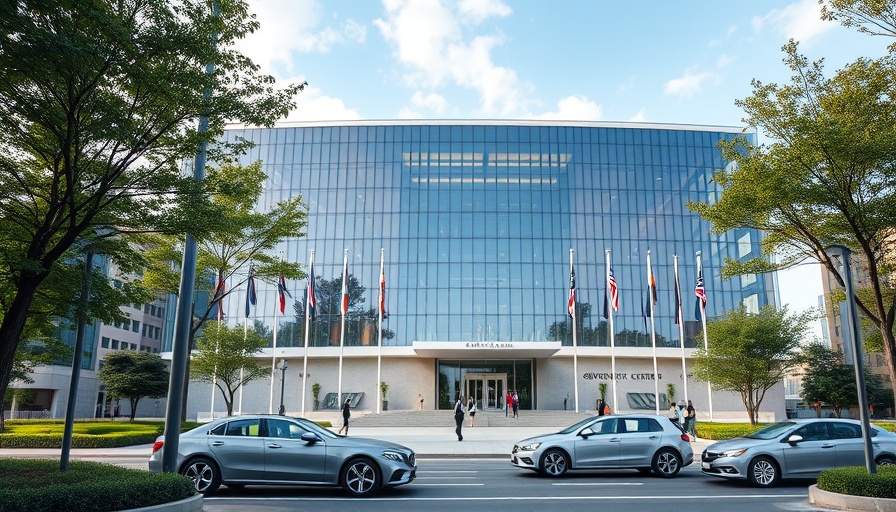
Building for Efficiency and Sustainability
The new Government Center in East Dallas signifies a shift towards modern infrastructure that prioritizes both efficiency and sustainability. Spanning 3,623 square meters, this two-story office building is designed to support several key Dallas County departments, enhancing the way services are delivered to residents. Construction is spearheaded by Adolfson & Peterson Construction, which aims for LEED Silver Certification, reflecting a commitment to environmentally friendly building practices.
Maximizing Space for Community Needs
Designed to house essential functions such as the Constable’s office, Juvenile Probation services, and the Justice of the Peace Court, this facility exemplifies space optimization in public service environments. Community-focused designs like these not only streamline operations but also create welcoming spaces for citizens, thus enhancing citizen engagement.
Embracing Solar Energy for Future Savings
A formidable aspect of this new building is its solar energy installation, which is projected to power the entire facility. This proactive step not only reduces long-term energy costs but also showcases a growing trend in the construction industry: building for the future with renewable energy solutions. By utilizing solar technology, the East Dallas Government Center sets a precedent for local and state governmental projects.
A Local Response to Global Challenges
As communities across the globe confront issues related to climate change and resource scarcity, the move towards greener infrastructure is undeniably relevant. Projects like the East Dallas Government Center serve as a microcosm of a broader commitment to sustainability in construction. Importantly, this facility not only aims to reduce its carbon footprint but also encourages other public sectors to follow suit.
Looking to the Future: What’s Next?
Set to open in summer 2026, this Government Center is more than just a building; it represents a vision for the future. With advancements in construction technologies and ongoing developments in sustainable practices, the combination of modern design and ethical considerations is going to shape how public facilities operate for years to come.
As construction firms and design professionals continue to innovate, it is clear that the focus is shifting towards not just creating functional buildings but creating spaces that foster community well-being and environmental stewardship. Therefore, it’s crucial for stakeholders—including business owners and property developers—to remain aware of these trends, as they directly influence investment decisions and community development strategies.
 Add Row
Add Row  Add
Add 




Write A Comment